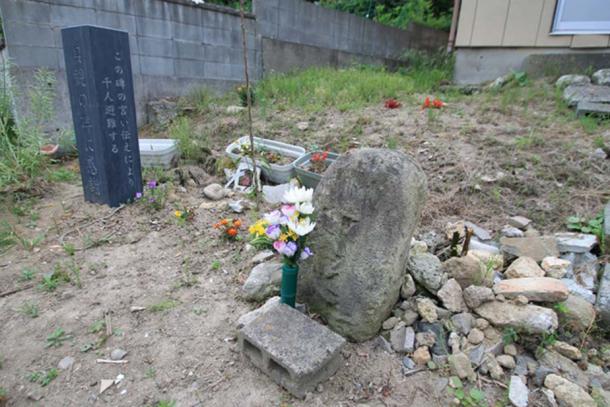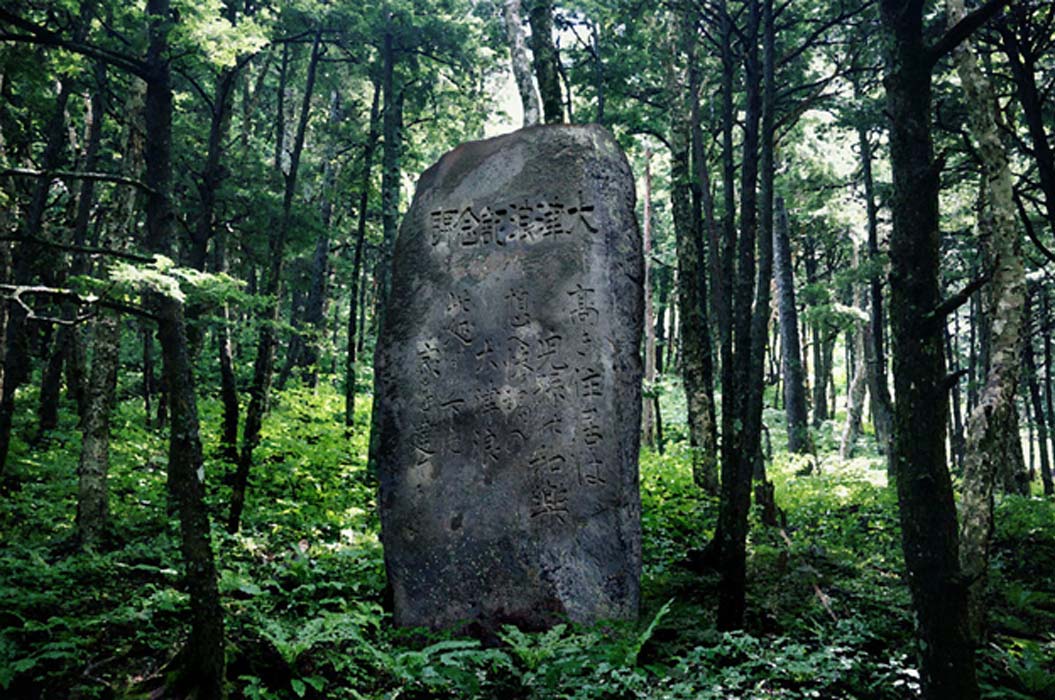Japanese Tsunami Stones: These Centuries-Old Monuments Save Lives Today
Japan is often struck by earthquakes due to its position on the Pacific Ring of Fire. At times, these seismic activities result in tsunamis - a ‘seismic or tidal sea wave’. Although such a deadly force of nature cannot be stopped, the Japanese have learned methods to minimize the damage caused by tsunamis. One way is by heeding the advice their ancestors engraved on ‘tsunami stones’.
The word tsunami itself comes from Japanese language and translates as ‘harbor wave’. It has been estimated that several hundred tsunami stones have been erected all over the coast of Japan during various periods in the island nation’s history. The majority of the tsunami stones are said to date to around 1896, the year when a tsunami struck the country, killing up to 22,000 people. But there are also stones that were created at much earlier periods of time. For instance, a tsunami stone known as the ‘Jōgan tsunami warning tablet’ is believed to have been erected following the devastating earthquake and tsunami of 869 AD. This incident, known as the ‘Jōgan Jishin’, or the ‘869 Sanriku Earthquake’, struck the northern part of Honshu, causing much destruction in the region. A written account, as well as the tsunami stone, serve as a record and reminder of this disaster.

Old and new Jōgan tsunami warning stones. (Aska)
Warnings and Memorials
Over the centuries, the Japanese people continued the practice of placing tsunami stones along the Japanese coastline. The inscriptions found on these stones varies in nature. As an example, a tsunami stone in Kesennuma, a city in the Miyagi Prefecture of Honshu, has the following inscription, “Always be prepared for unexpected tsunamis. Choose life over your possessions and valuables”. However, not all tsunami stones contain such warnings or advice, as some of them were erected to serve as memorials instead, by listing the death toll of past tsunamis, or as markers of mass graves.
- Sunk by a Tsunami, Underwater Archaeologists Finally Find the Ruins of the Roman City Neapolis
- 6,000-Year-Old Skull is Earliest Known Victim of a Tsunami
- Kamikaze – The Divine Winds that Saved Japan
Over time, people forget about the tsunamis that strike, and tsunami stones become a relic of the past. Fumihiko Imamura, a professor in disaster planning at Tohoku University asserts that it takes only three generations before the memory of a disaster begins to fade. This, however, is not always the case, as some have heeded the warnings of their ancestors, and therefore were able to save themselves when a tsunami struck. This may be seen in the case of Aneyoshi, a small village in the Iwate Prefecture of Honshu.

"Thirty-six Views of Mount Fuji - The Great Wave off Kanagawa". (Public Domain)
The Aneyoshi Stone
In Aneyoshi, a tsunami stone was set up after it was devastated by two tsunamis. The first tsunami struck the village in 1896, leaving only two survivors, whilst only four villagers were left after the village was destroyed by the second one in 1933.The inscription on the tsunami stone at Aneyoshi reads as follows, “High dwellings are the peace and harmony of our descendants. Remember the calamity of the great tsunamis. Do not build any homes below this point.” This stone is unique in that it is the only one that specifically tells its readers where to build their houses.
- The Controversial Iwajuku Site and the Argument for the Japanese Paleolithic Period
- Record of ancient tsunamis found in Indonesia cave
- Mediterranean Tsunami Could Have Been the Inspiration for the Biblical Story of Moses Parting the Waters
The villagers of Aneyoshi, who revered their ancestors and heeded their injunctions, were thus saved when Japan was devastated by the 2011 Tōhoku earthquake and tsunami. After the tsunami of 1933, the villagers moved their homes permanently uphill, and the stone was placed as a warning marker. The descendants of these villagers were saved by the stone when a tsunami struck in 1960, and once more in 2011. As a matter of fact, the waves of the 2011 tsunami stopped just about 90 meters (295.28 ft.) below this warning stone.

Aneyoshi tsunami stone. (T. Kishimoto/CC BY SA 4.0) A translation of the inscription: A home built high is children's relief / Remember the disastrous giant tsunami / Do not build homes below here.
Although the tsunami stones may seem to be remnants of a bygone age, they have been able to save those who heed their warnings. By comparison, the modern seawalls built by the government did not provide adequate protection to people living on the coast. Thus, by complementing modern technology with ancient wisdom, the destruction of natural disasters such as tsunamis may be mitigated in the future.
Top image: A tsunami stone. Source: Will&Jo
By Wu Mingren
References
Adrian, 2016. Tsunami Stones: Warnings from Antiquity Can Still Save Lives. [Online]
Available at: http://www.ripleys.com/weird-news/tsunami-stones/
Andrei, M., 2016. Japan’s North coast is riddled with ancient carved stones – tsunami warnings. [Online]
Available at: https://www.zmescience.com/other/feature-post/tsunami-warnings-japan/
Fackler, M., 2011. Tsunami Warnings, Written in Stone. [Online]
Available at: http://www.nytimes.com/2011/04/21/world/asia/21stones.html
Kaushik, 2015. Ancient Tsunami Warnings Carved in Stones in Japan. [Online]
Available at: http://www.amusingplanet.com/2015/03/ancient-tsunami-warnings-carved-in.html
Kohlstedt, K., 2016. Tsunami Stones: Ancient Japanese Markers Warn Builders of High Water. [Online]
Available at: https://99percentinvisible.org/article/tsunami-stones-ancient-japanese-markers-warn-builders-high-water/
Lewis, D., 2015. These Century-Old Stone “Tsunami Stones” Dot Japan’s Coastline. [Online]
Available at: https://www.smithsonianmag.com/smart-news/century-old-warnings-against-tsunamis-dot-japans-coastline-180956448/
Roselinde on the Road, 2015. 5 Facts About Tsunami Stones. [Online]
Available at: http://www.roselinde.me/2015/11/27/tsunami-stones-5-facts/
Smith, I., 2015. Awesome Find: Ancient Tsunami Warnings Carved in Stones in Japan. [Online]
Available at: https://www.thevintagenews.com/2015/09/22/awesome-find-ancient-tsunami-warnings-carved-in-stones-in-japan/



















